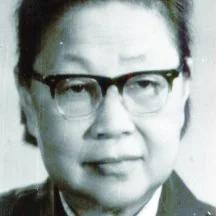
Lu Shijia
| Name | Lu Shijia |
| Title | Chinese physicist (1911-1986) |
| Gender | Female |
| Birthday | 1911-03-18 |
| nationality | People's Republic of China |
| Source | https://www.wikidata.org/wiki/Q8288981 |
| pptrace | View Family Tree |
| LastUpdate | 2025-10-01T23:19:34.331Z |
Introduction
Lu Shijia (March 18, 1911 – August 29, 1986) was a renowned Chinese fluid mechanician born in the residential area of Lion Forest in Suzhou, Jiangsu Province. Her grandfather, Lu Zhongqi, was a successful imperial scholar in the late Qing Dynasty. After the Xinhai Revolution, her family suffered major upheavals; her grandparents and father were murdered by the new army in the governor’s office, but her mother and she managed to escape at her birth. Subsequently, Lu Shijia lived with her mother in Beijing, attending the affiliated primary school of Beijing Higher Normal School (now the First Experimental Primary School), where she was classmates with Qian Xuesen, Zhang Wei, and others. Deng Yingchao once taught at this school.
In 1923, at the age of 12, Lu Shijia was admitted to the affiliated middle school of Beijing Normal University. During her childhood, she read biographies of Marie Curie, inspiring her to pursue science and emulate Marie Curie. In 1929, she entered the Physics Department of Beijing Normal University with outstanding results, becoming the only female student in her department. After graduating in 1933, she graduated top of her class with a bachelor’s degree and went on to teach at the Third Girls’ Normal School in Damingfu, Hebei.
In 1937, after Japan triggered the Marco Polo Bridge Incident, Lu Shijia and Zhang Wei took a boat to Europe to study abroad. She entered the University of Göttingen in Germany to study physics. During her studies, she was awarded the Humboldt Scholarship. In 1938, facing Japanese military bombings, she decided to switch to aeronautics and visited Professor Planck, becoming his only female student and doctoral candidate. In 1941, her thesis titled “Updraft of a Cylindrical Jet Encountering Vertical Airflow” was awarded her a doctorate.
During her studies abroad, she used her theoretical expertise to solve technical problems related to jet engines. After graduating, she served as assistant at the Berlin Higher Industrial School and later worked as a research engineer at the Saxony Shipyard. In 1944, due to bombing of her research institute, she resigned and returned to China. Arriving back in 1946, she taught at Beiyang University in Tianjin and later at Tsinghua University. After the founding of the People’s Republic of China in 1949, she became a professor in the Aeronautics Department at Tsinghua University and joined the China Democratic League in 1951.
During the reformation of Chinese higher education and the development of the nation’s aerospace industry, Lu Shijia played an important role. She was one of the pioneers in Chinese aerodynamics research, leading the construction of wind tunnel experimental facilities and promoting the discipline’s development. She participated in the country’s second scientific development plan and proposed several research directions in aerodynamics. Her academic works include multiple publications, notably “Fluid Mechanics.”
As an outstanding scholar, she actively trained graduate students, advanced frontier research in her field, and served as a deputy to the National People’s Congress and a standing member of the Chinese People's Political Consultative Conference. During the Cultural Revolution (1968–1972), she was subjected to struggles but was later rehabilitated. In 1982, she visited Germany and presided over the national conference on boundary layer and viscous fluid mechanics, further promoting the discipline. She passed away in 1986 at the age of 75 due to illness. Her life and achievements have had a profound influence within China and internationally in the academic community.
Family Tree
Tap to expand more relatives
